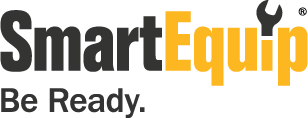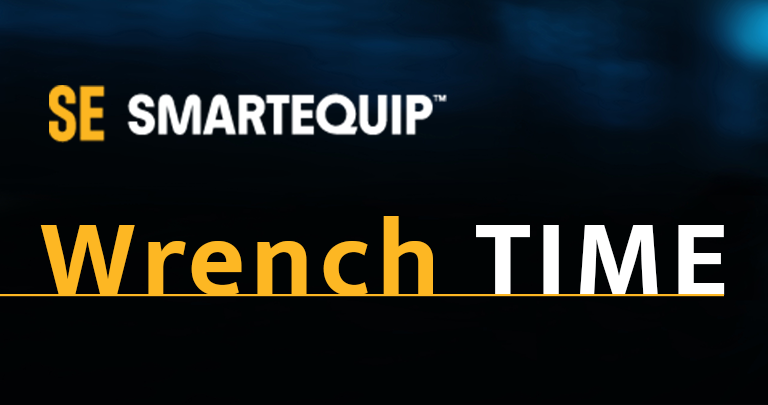
A SmartEquip Return on Your Investment
In this conversation, Alexander Schuessler, founder of SmartEquip and president of its international group, discusses the complexity of making Return on Investment (ROI) calculations for contractors, dealers and fleet owners. Drawing on his years of experience, initially as an economist and then working in the equipment industry, Schuessler uses SmartEquip’s suite of SaaS parts procurement, product support and equipment lifecycle technology as an example of why it is critical for construction business owners to gain not just an understanding of why ROI is important when considering new purchases, partners or services – but also how to apply and quantify those metrics downstream after an acquisition or service agreement has been reached.
With more than 25 years’ experience on the cutting-edge of emerging construction technology, Alexander Schuessler understands the pressures on equipment owners today as they deal with a seemingly endless deluge of new products, services, and technology. The pressure to make the right decision and invest wisely can be overwhelming at times. But, Schuessler says, understanding and applying return on investment (ROI) metrics to any procurement decision can not only allay concerns at the time of purchase, but also give fleet owners a sound business case for making the decision, as well as an accurate picture as to what the downstream benefits a purchase decision will have for their business.
“Doing a formal ROI calculation can be an intimidating task for people looking at technology solutions,” Schuessler says. “But, at the end of the day, ROI comes down to simply making both a short-and long- term business case to bolster – or negate – a purchase decision.”
At its most basic level, calculating ROI for technology is no different than for anything else, in that you map the cost of implementation against resultant cost and revenue improvement. “Those are the only important factors you have to contend with in assessing ROI,” Schuessler explains. “And for you to achieve a positive ROI, you either need to find a way to reduce your net operating costs or improve your revenue.”
Costs associated with equipment service, repair, and maintenance, Schussler explains, includes parts expenditures, supplies, labor cost time, service technician training, tools, and so forth. “To reduce these costs, you look for technology solutions which enable you to purchase parts efficiently and at the right price, which make your service technicians more efficient, and which generally automate many of the laborious manual steps associated with keeping your fleet running.”
“Revenue improvements, in contrast, emerge when you can put equipment to use more – be it as a rental fleet, where you can charge for additional rental cycles, or as a contractor, where you can put it to work in additional jobs.”
“What is wonderful about the right technology solution,” Schuessler adds, “is that sometimes the two are naturally linked. This is true for our Procurement solution. For instance, by enhancing the efficiency of service technicians, you automatically improve equipment availability and your ability to grow revenue. The link is very straight forward: for every hour you save in service technician cost – by reducing the time it takes them to complete a repair, to locate and order the required parts, to finish up all associated paperwork – that machine will be available for that same additional hour. Service costs go down and revenue goes up, together.”
In other words, from an ROI perspective, SmartEquip Procurement is an especially powerful tool in that it affects cost and revenue using one set of drivers.
Finding a Better Way to Work
Interestingly, Schuessler says that the original concept for SmartEquip was centered firmly on improving parts and service workflow and efficiency, for both equipment owners and their suppliers – regardless of whether they were dealers, distributors, or manufacturers. In fact, from the very beginning, the company’s DNA was about making ROI quantifiable.
When SmartEquip first began, its founders recognized that while parts procurement accounted for only 1-2% of the financial cost of total expenditures for a typical fleet owner, as much as 80-90% of the number of transactions they would create in any given year involved the purchase of parts. And from an operational perspective, these were by far the most expensive types of purchase they faced.
“Ordering parts is an incredibly complicated process – even today,” Schuessler notes. “Manufacturers’ parts numbers change all the time. It’s quite common for fleets to have older parts with superseded numbers available on a shelf, but not be able to recognize whether they fit a particular repair. It’s a data-intensive process that can eat up hours of valuable shop time. As we all recognized long before we started the company, it was not at all uncommon for even experienced technicians to spend hours trying to find a part, using conventional purchasing methods. And so, SmartEquip was founded as a technology that could help these businesses understand and overcome the inherent complexities surrounding parts procurement, with tremendous time savings and accuracy improvements. Even though our focus has since expanded to enhance other areas of the enterprise, our original goal was to make service technicians more efficient. There’s just an obvious, and robust, ROI component for shops when we make that happen.”
It is important to note that dealers have always played a critical role in this relationship: especially for parts which are difficult to identify and to source, a strong relationship with a highly responsive dealer commonly saves the day. “That’s your benchmark,” Schuessler notes. “And once dealers joined the Network, they were able to do two things: they were able to now support each asset in your fleet in a serial-number specific manner, as if they were looking over your shoulder while you’re working (even though, of course, they are not!). And they could do so 24/7, year-round. With technology, your technicians will no longer need to reach out to their dealer, as the dealer is already in effect “streaming” customized support information to each individual piece of equipment in your fleet.”
With SmartEquip’s integrated parts procurement system, Schuessler notes, that complicated process is vastly simplified. “All the technician needs with their SmartEquip Procurement platform is a single ID number for the machine,” he explains. “Typically, it’s your own, in-house asset number, but it could just as easily be the serial number off an excavator. Once that information is entered into the SmartEquip solution, everything is automated. Various options for parts are presented – all with full SmartEquip Network service and support on standby throughout the entire process to assist if problems occur.”
While this was an obvious benefit for the fleet owner, it is worth emphasizing that SmartEquip also delivers immediate and important ROI to the dealer.
Traditionally, Schuessler explains, for equipment dealers to provide service support required a great deal of direct involvement with the customer. With SmartEquip Procurement, they now can provide a significantly higher level of customer touch, dynamically customized to the needs of each asset, at a significantly lower cost.
Secondly, they can provide a higher level of parts availability, while actually reducing their own internal inventory requirements, in that the Network is able seamlessly to affect the drop shipping of parts from a variety of internal (e.g. warehouses) and external (e.g. direct from the manufacturer) sources. Therefore, their customers will benefit from generally high levels of parts availability, without requiring the dealers to increase their own physical inventory.
Improved Efficiencies and Revenues
SmartEquip’s positive ROI metrics tend to be very clear for all participants on the Network, Schuessler notes. “The most immediate cost reduction most shops will see is in reduced cost of service/technician labor. Before SmartEquip, technicians spent about 50% of their time without a wrench in their hand looking for parts, or researching parts numbers,” he says. “And that was in addition to entering repair orders manually, and then reentering them into the PO (purchase order) system. It was a lot of time-consuming, duplicate work that kept technicians from focusing on what makes a shop and a fleet money – repairing equipment.”
SmartEquip Procurement eliminates most of that busy work, Schuessler notes. That’s because all the critical information technicians need comes to them on an asset-specific basis. And since every aspect of the repair ordering and reporting process is handled electronically, it does away with manually entered purchase orders and work orders, and with the need to reenter data repeatedly in different systems. “Everything is entered only once, usually by pointing and clicking at the needed parts in an interactive technical diagram for the specific machine,” Schuessler notes. “From there, the system fills out required purchase requisition and awaits approval, then auto-generates the purchase and work orders, automatically submits the orders in the suppliers’ systems, while ensuring correct pricing, thereby giving the service technician plenty of extra time to work the equipment into the system and reported to all concerned parties automatically, using SmartEquip.” Schuessler adds, “Simply from increased shop and technician efficiency, the ROI is pretty obvious.”
Some fleet customers report that their shop throughput productivity increased by as much as 80% after adopting SmartEquip Procurement, Schuessler says. “In real-world terms, that means the technicians in that shop are almost twice as productive as they were before using SmartEquip.”
In addition, Schuessler adds, SmartEquip Procurement allows contractors, rental companies, and other fleet owners to order parts from preferred providers at their negotiated prices. “So, no matter where a part comes from, its price is set consistently with the pricing agreements in place with the suppliers,” he explains. “Fleet owners no longer need to tie up the accounts payable process due to pricing mismatches, and suppliers no longer need to worry about receivables.”
So where does that leave decision makers in terms of ROI?
When equipment owners initially decide to join the SmartEquip Network, they usually do so because the ROI in cost savings alone carries the business case. Yet, typically, when these same decision makers look back at their decision a year or so following implementation, Schuessler adds, they recognize that revenue improvements due to increased equipment availability trump these savings. “For every hour in service time cost savings, equipment availability goes up an hour, as well. This revenue impact on profitability is often greater than the cost savings upon which the original business case was built – therefore resulting in a more-than doubling of financial impact.”
And compared to other e-commerce technology solutions, where one party’s gain comes at another party’s loss, everyone gains with a SmartEquip Network solution. “This is emphatically a positive-sum solution. Dealers receive more accurate orders, can operate with lower inventory levels, while offering a much higher level of customer support at a much-reduced cost to them.”
All of this comes at fairly minimal financial layout up front: the SmartEquip Network does not cost a fortune to join – for fleet owners, dealers, and OEMs alike. Because it is a subscription-based service, “you only pay for as long as the benefits outweigh the costs – in other words, as long as a positive ROI is in place,” adds Schuessler. ROI is everyone’s friend on the SmartEquip Network and judging by the ever-growing size of the Network, with some of its participants recently having surpassed the 20-year mark, ROI continues to be the solid foundation on which their membership is based.
For more information on how to the SmartEquip Network, visit SmartEquip.com.



